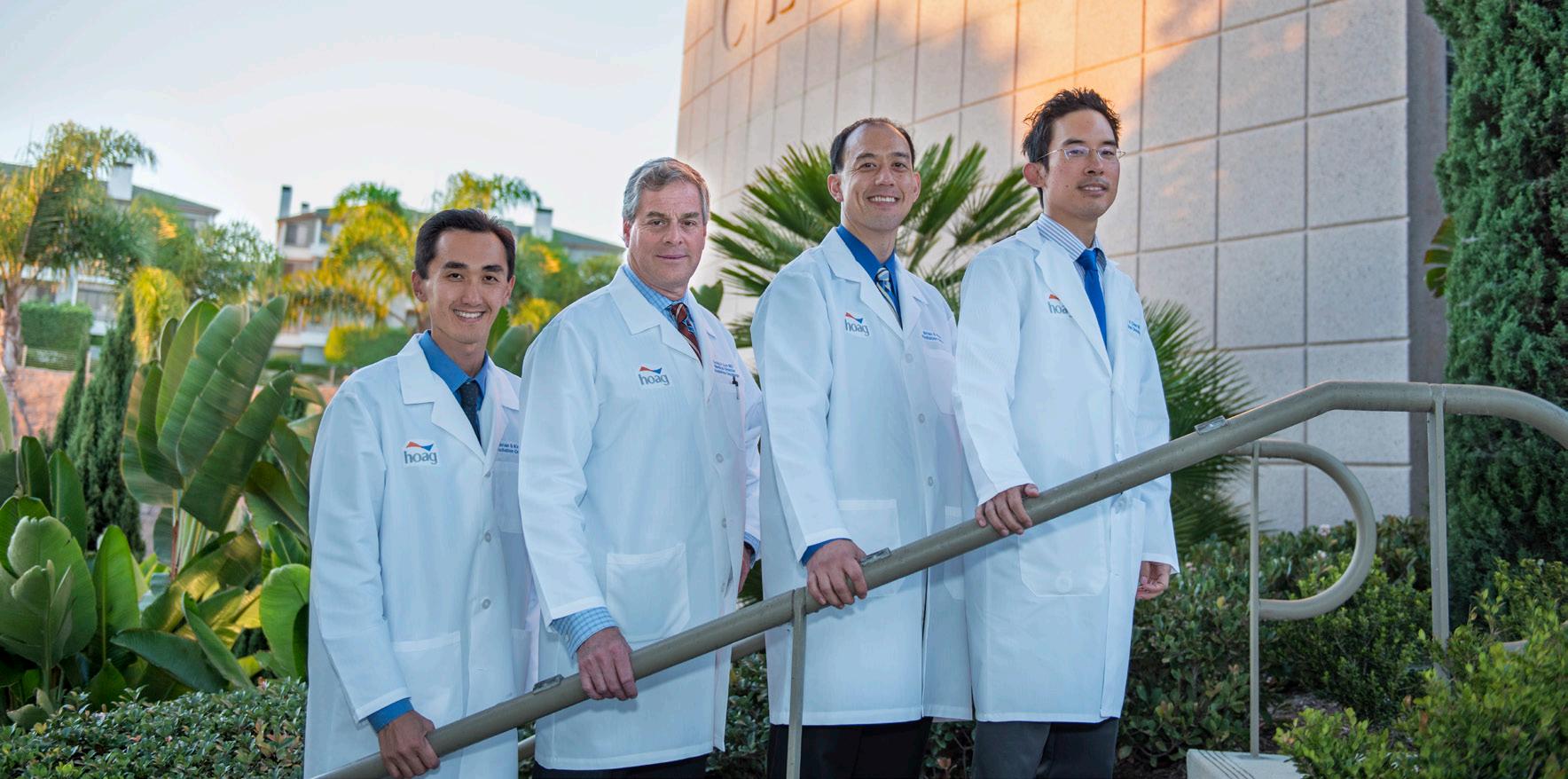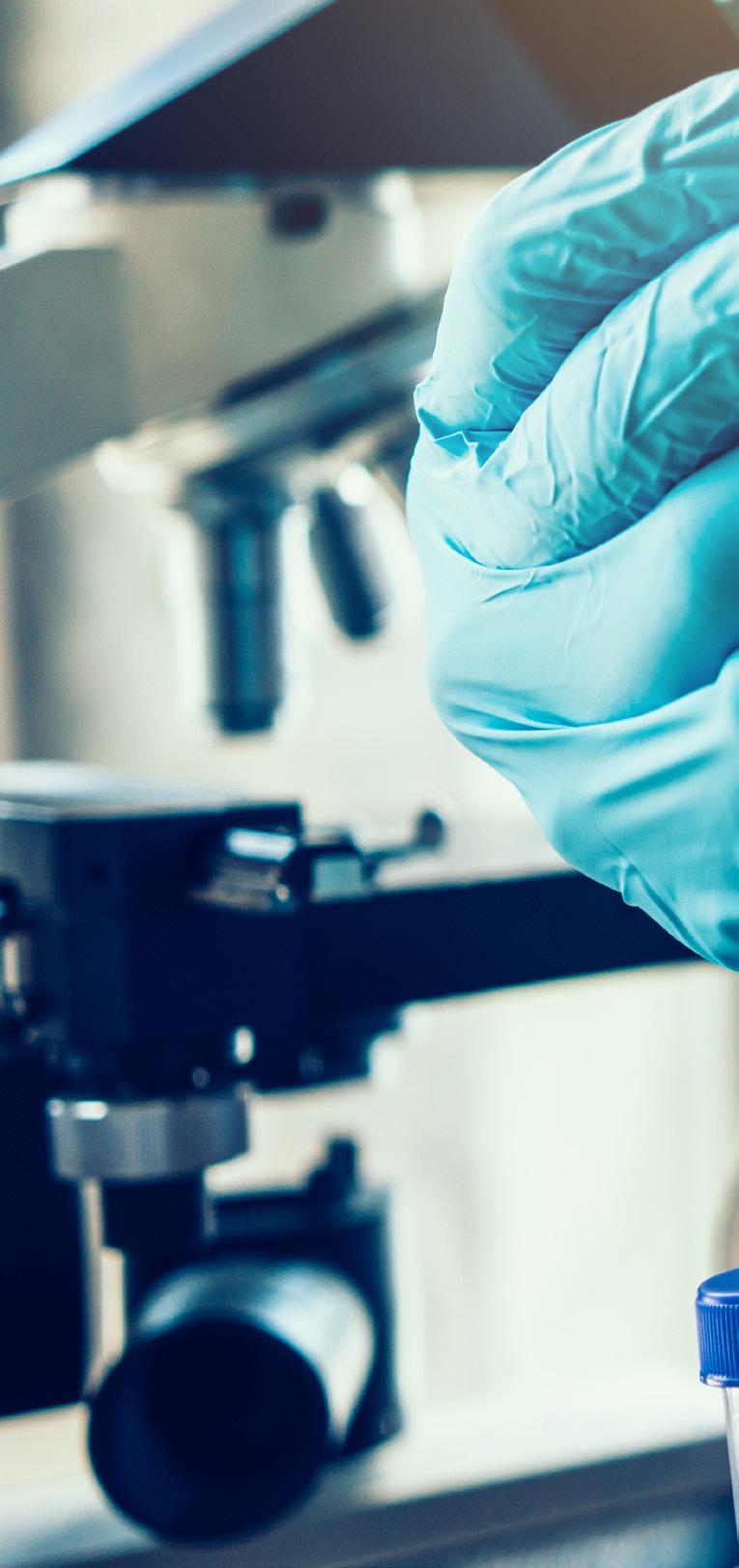Radiation Oncology at the Hoag Family Cancer Institute

2023 Impact Report



2023 Impact Report

The Radiation Oncology Program is an essential component of the Hoag Family Cancer Institute’s integrated, multidisciplinary approach to cancer care. Radiation oncology is a highly technical specialty. An exceptional program requires significant resources and ongoing investment to maintain the sophisticated equipment, technology, and expert team needed. Thanks to your generosity, Hoag offers the most comprehensive selection of advanced radiation technology along with the clinical expertise to provide patients access to world-class radiation oncology care in our backyard. We are grateful for your support, which has helped make Hoag the number one provider of radiation therapy in Orange County and achieve some of the best patient outcomes anywhere.

Providing the highest-quality radiation therapy takes a comprehensive team who work collaboratively and prioritize an individualized approach for each patient. Under the leadership of Craig Cox, MD, medical director of Hoag Radiation Oncology, philanthropy has enabled Hoag to retain a highly trained team that includes:
• Five board-certified radiation oncologists
• Five board-certified medical physicists

• Medical dosimetrists
• Radiation oncology nurses
• Radiation therapists
• Registered dietitians
• Speech and swallowing specialists
• Nurse navigators
The radiation oncologists, physicists, and dosimetrists work together to develop complex treatment plans using state-of-the-art software and imaging techniques. Physicists also provide technical support and knowledge of the highly specialized treatment machines, while radiation therapists, compassionate nurses, and support staff ensure patients are assisted throughout their journey.
Every patient is unique, and so is their cancer. Hoag’s commitment is to personalize each patient’s cancer treatment plan to provide the most effective care and optimize quality of life. Unlike many radiation oncology programs that have just one or two treatment machines, Hoag maintains the full spectrum of specialized treatment machines, which each have unique traits and features. This allows the team to choose the treatment that will be most effective for each patient, instead of taking a one-size-fits-all approach.

Because of your support, Hoag’s Radiation Oncology Program is consistently on the forefront of the latest equipment and technological advances in the field. This includes:
Hoag was the second health care institution in California and the sixteenth in the nation to acquire the ViewRay MRIdian®, which is the most advanced radiation therapy available today. It is the first and only linear accelerator with MRI imaging, which equips clinicians with real-time, highresolution images of the patient’s tumor and surrounding areas during radiation therapy. Housed at the Dean & Gerda Koontz Radiation Oncology Center at the Patty & George Hoag Cancer Center in Newport Beach, the ViewRay has been a game changer for patients, particularly when it comes to treating cancers in the abdomen, where the position of the tumor can shift from movement in the GI tract and from the patient’s breathing. The continuous MRI imaging allows radiation oncologists to account for movement in real time to deliver radiation to the target much more precisely while minimizing damage to healthy surrounding areas, which decreases side effects. With the newness of the technology, Hoag’s radiation oncologists are continuing to discover new uses and capabilities of the ViewRay, expanding effective treatment options for patients in our community.
Hoag was an early adopter of this breakthrough technology, which uses CT imaging to target the tumor more precisely. Traditionally, radiation therapy treated a tumor by focusing relatively large beams of radiation from two to six directions. TomoTherapy®, however, uses hundreds of pencil beams of radiation, rotating in a spiral around the tumor and hitting it from all directions. As the beam rotates, the intensity of the radiation varies, which allows clinicians to deliver radiation with increased precision and spare healthy tissue. Another benefit of TomoTherapy® is the length of field in the body that can be treated, unlike other treatment machines that are more restricted. For example, the entire spine can be treated at one time using TomoTherapy®.
With brachytherapy, a small radioactive source is temporarily placed inside certain types of tumors for a precision-oriented approach. Brachytherapy requires a high level of expertise, and many radiation oncology centers do not offer it. Hoag recently invested in a new specialized hybrid applicator that will increase our capabilities in treating gynecologic cancers with brachytherapy— particularly advanced cervical cancer—which is more effectively treated with radiation than with surgery.
Treatment planning software is critical in designing each patient’s radiation therapy plan. Patient cases are not always clear-cut due to previous radiation treatment and other factors, which must be considered in treatment planning. Hoag has invested in the most sophisticated treatment planning system available, which uses information gathered from MRI, PET, CT, and X-ray images to create 3D models of a patient’s tumor and anatomy. Using a virtual reality environment, the team can make decisions about how best to deliver the dose of radiation to the targeted area.


As part of the Hoag Family Cancer Institute’s commitment to offer patients access to the most promising new therapies, Hoag’s Radiation Oncology Program is both leading and participating in an increasing number of clinical research studies. Conducting clinical research is labor-intensive and a significant time commitment; philanthropy helps resource Hoag’s efforts. Some of the innovative radiation oncology research underway at Hoag includes:
This revolutionary approach treats early breast cancer by delivering the total planned radiation dose directly to the tumor at the time of breast cancer surgery, sparing the patient four to six weeks of traditional radiation treatment. Hoag has been a pioneer in IORT, which is a collaboration between Hoag’s expert breast cancer and radiation oncology teams. Hoag has performed more cases than any other hospital in the nation and published outcomes in some of the most respected medical journals.
Hoag currently offers a number of clinical trials testing the theory that radiation increases the effectiveness of immunotherapy, which is thought to do so in two ways: 1) Radiation causes a local inflammatory effect that stimulates the immune system, and 2) Cancer cells often masquerade as healthy cells, making it difficult for the immune system to respond. When radiation is given and kills the cancer cells, the body’s immune cells recognize the materials given off from the destroyed cancer cells and become more effective at recognizing and attacking cancer cells. Some of these trials are so advanced, patients from all over the U.S. and even abroad are traveling to Hoag to participate.
As a leader in radiation oncology, Hoag’s program attracts industry members who are motivated to collaborate with Hoag to advance the field and improve technology. Hoag’s team designed and will soon launch a clinical trial exploring the efficacy of partial breast radiation for the treatment of early-stage breast cancer using the ViewRay.

Science and technology are evolving the field of radiation oncology at a faster pace than ever before. Exciting innovations on the horizon will enhance patient care and improve cancer treatment outcomes. Philanthropic support is critical in allowing Hoag to usher in the newest groundbreaking technology to advance the Radiation Oncology Program. Some of the possibilities include:
Using protons rather than X-rays to deliver radiation, proton therapy can be targeted more directly at the tumor, which minimizes side effects. While proton therapy itself is not new, recent significant advancements have improved both the technology and the ability to implement it more easily at a lower cost. There is currently no proton therapy available in Orange County.
This radiation technology combines PET imaging with a linear accelerator. The photons given off by the PET are replaced with a radiation particle, which allows for cancer that has metastasized to multiple areas to be treated with radiation simultaneously in a highly accurate way.
Radiation oncologists and clinical leadership at the Hoag Family Cancer Institute are currently planning for the next five to ten years of cancer care at Hoag and exploring the best technological investments to enhance our current program, keep Hoag on the leading edge, and provide patients in our community with the highest level of care. We value our partnership with our donors, which will continue to make this possible.

On behalf of Hoag, our patients, and their families, thank you for your generous support of Hoag’s Radiation Oncology Program. Your commitment to bolstering Hoag’s ability to provide the most advanced radiation therapy available benefits patients and our community both now and in the future. Leaders from the Hoag Family Cancer Institute and the Radiation Oncology Program share in our gratitude.
“Every contribution, big or small, makes a difference. From the highest level of technology to training and education opportunities for our team, donors enhance the care we provide.”
– Craig Cox, MD, Medical Director, Hoag Radiation Oncology“If we relied strictly on insurance reimbursement to operate our radiation oncology program, we would either have to decrease the quality of our work or eliminate portions of it. Philanthropy has allowed us to run a superior program and get some of the best results anywhere.”
– Burton Eisenberg, MD, Grace E. Hoag Executive Medical Director Endowed Chair, Executive Medical Director, Hoag Family Cancer Institute“We see the impact of donor support in many different ways. The new technologies we’ve acquired have allowed us to better cure our patients and do it with fewer side effects. If Hoag didn’t have this technology, people with cancer living in this area would need to go elsewhere for treatment. That’s not an easy task for someone to uproot everything and go to a place away from their support system.”
– Brian Kim, MD, Hoag Radiation Oncologist“Radiation oncology is a high-technology and high-expense field. We are fortunate at Hoag to have the kind of support needed to stay on the forefront. As a clinician, it’s wonderful to have options to offer patients from the best technology to clinical trials.”
– Peter Chen, MD, Hoag Radiation OncologistRadiation Oncologists:
Craig Cox, MD, Medical Director
Peter Chen, MD
Brian Kim, MD
Kevin Lin, MD
Shane Lloyd, MD, PhD
Medical Dosimetrists:
Jamie Mock, CMD
James Nevins, CMD
Darrin Nikolaisen, CMD
Harold Schmitz, CMD
Kelly Vaughn, CMD
Radiation Therapists:
Shahrzad Behzadpour, RTT
Megan Chappell, RTT
Deann Coelho, RTT
Toni Decuffa, RTT
Bree Delgadillo, RTT
Joseph Ebacher, RTT
Jenan Mardini, RTT
Vanessa McClain, RTT
Brianna McGrath, RTT
Cheryl Mehta, RTT
Leticia Mexicano, RTT
Visal Nip, RTT
Caroline Rodgers, RTT
Katherine Shah, RTT
Brandon Stevenson, RTT
Medical Physicists:
John Huang, MS, DABR
Venkata Lingampally, PhD
Annamarie Minion, MS, DABR
Benjamin Rusk, MS, DABR
Zhifei Wen, PhD, DABR
Jay Zheng, PhD, DABR
Radiation Nurses:
Lori Berberet, RN
Teresa Blatt, RN
Angela DeBassio, RN
Khryztine Ilagan, RN
Adrienne Jurado, RN
Liliana Munoz-Romo, LVN
Iona O’Lear, RN
Marjorie Strong-Butkiewicz, LVN
Vicki Taylor, RN
Administrative Staff:
Margan Agha Seyed Ali
Amanda Armendariz
Laura Clark
Lindsey Hott
Maritza Macias
Megan Marsh
Daniel Masters
Eduardo Rodriguez

For more information on how you can support the Radiation Oncology Program at Hoag, contact Jennifer Stameson, Executive Director of Development, at Jennifer.Stameson@hoag.org.
